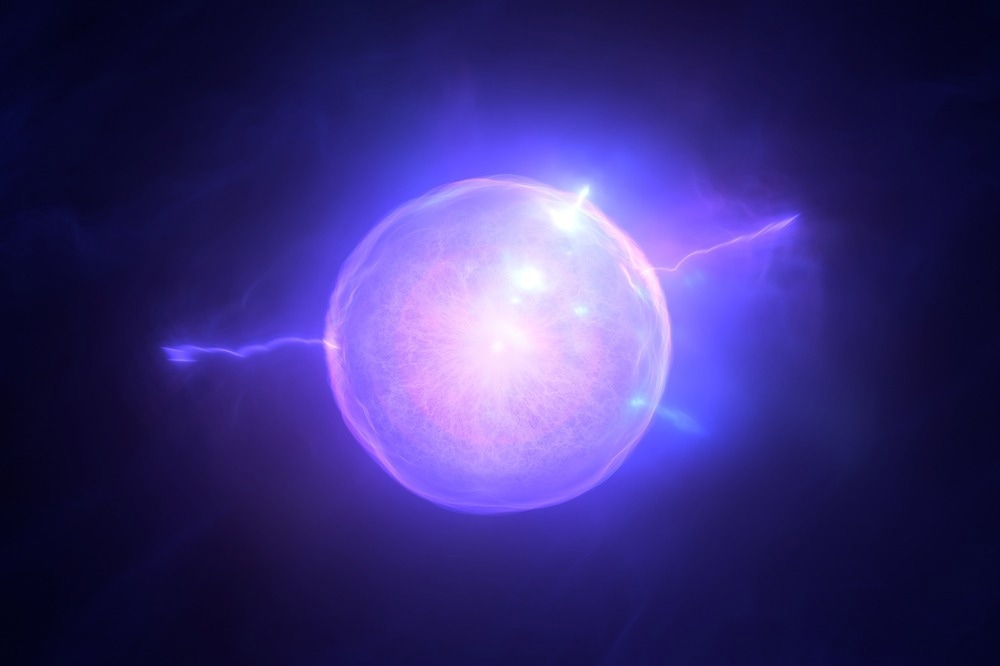Studying a high-energy neutrino that was thought to have an extragalactic origin and was discovered by the IceCube Neutrino Observatory at the South Pole has revealed some fascinating “new physics” that deviates from the standard model.

Image Credit: Jurik Peter/Shutterstock.com
Despite being extremely challenging to identify, neutrinos are thought to be present everywhere in the universe.
Now, a report detailing the first known detection of intergalactic, high-energy neutrinos and probing novel neutrino-related physics outside the Standard Model of Particle Physics has been published in EPJ Plus by Moroccan astrophysicist Salah Eddine Ennadifi and his colleague.
Since they resemble electrons in many respects but differ in having no charge and either no mass or a very small mass, neutrinos are perplexing particles. Only two astronomical sources—the Sun and a solitary supernova—have been investigated, even though several celestial bodies have been proposed as neutrino sources by researchers.
Neutrino interactions are uncommon and can only be seen in a sizable amount of transparent substance, such as water or ice.
A cubic kilometer of clear, stable, and pure ice makes up the IceCube Neutrino Observatory (or telescope), which serves as a neutrino detector near the South Pole.
As part of the global IceCube Collaboration, Ennadifi and his colleagues from Mohammed V University in Rabat, Morocco, participated.
In this publication, Ennadifi and his coworkers describe how the IceCube telescope discovered a high-energy neutrino that is linked to an object in space known as a blazar (a quasar with a relativistic jet).
The linked blazar is estimated to be around 4 billion light-years away from Earth and to have an energy of roughly 300 TeV (300 trillion electron volts). If true, it would meet the criteria for being a “truly astrophysical neutrino.”
Despite being extremely rare, high-energy neutrinos like this one can be used to examine purportedly “new physics” that goes beyond the Standard Model. Since the Standard Model solely accounts for massless neutrinos, scientists were able to calculate its mass.
They conclude that high-energy neutrinos from cosmic sources are likely to produce revelations that are more “surprising” and lead to future revisions in how we see the forces of existence.
Journal Reference
Belhaj, A., et al. (2022) Probing New Physics from TXS 0506+056 Blazar Neutrinos. EPJ Plus. https://link.springer.com/article/10.1140/epjp/s13360-022-02792-7